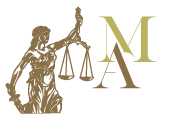The basic provisions of the new law:
1 Distinguish between licensing and application control. Until now, the licensing and control was done in the Urban Planning, the licensing will now be the work of the Urban Planning and will be exercised at the level of the Municipality. However, the control will be exercised by the Observatory of a structured environment at the level of an elected Region.
2 The procedures for the issuance and control of building permits are greatly simplified and accelerated so that for a significant category of permits for which there is a safe legal urban planning framework, the permits are issued immediately after their electronic submission. It is planned to separate the sanctions of a new arbitrary and a simple urban violation, with the aim of speeding up the procedures for completing the arbitrary designation. At the same time, in the context of simplification, the concept of notification of construction works is introduced so that construction works do not stop when there is a need to modify the study.
3 A substantial review of both the mechanism and the means of monitoring and controlling the quality of the built environment as well as the methods of dealing with arbitrary construction is envisaged.
4 New institutional tools are introduced, such as the Bank for Building Rights and Shared Areas, the electronic identity of the building and the electronic recording of the arbitrary constructions that have been constructed since July 28, 2011. The Structured Environment Observatory is also envisaged, a new mechanism for monitoring, recording, controlling and taking measures to protect the built environment. The new mechanism provides for a significant decentralisation of responsibilities and resources to the elected Regional Government, which is essentially undertaking at this level, and consists of three different structures:
1 The Observatory of Structured Environment, which will be subject to the RIS the central, ie Observatory.
2 The Regional Observatories that will be produced in each Region.
3 The Local Observatories that will belong to each regional Unit of the once old Prefectures.
In order for the regional authorities to have the resources required to exercise these new responsibilities, the bill provides for the allocation of 25% of fines for arbitrary constructions after 2011 in the Region to which they belong, and 25% in the relevant local government. The remaining 50% will be allocated to the Green Fund for environmental balance actions. Strict conditions are set for the transfer of a building factor, for the provision of common areas and listed buildings, on the basis of the case law produced by a series of decisions of the Council of State.
The Bank for Building and Public Use Rights created as a digital application by RIS aims to utilize and manage building rights, in order to protect the natural and cultural environment and the public interest.
The aim is to create free common areas, preserve and restore cultural heritage buildings and upgrade urban and environmentally burdened areas. The electronic building identity aims to capture the current condition of the building and the permits that accompany it, so that it can be easier to control and monitor changes during a building’s lifespan.
With the expansion of the e-poleodomia program, an electronic urban identity of the Municipality is created, an electronic platform for recording and updating any information related to the spatial and urban planning situation of each Municipality. Under the new law, there are more favorable regulations for vulnerable social groups, resulting in a reduction in fees and penalties for settling arbitrariness. The number of installments is also increasing and discounts are being given to vulnerable social groups, mainly long-term unemployed and groups based on social solidarity income.
For the first time, pre-approval is introduced, which in most cases is optional, but creates legal certainty. The pre-approval process is mandatory especially for cases of buildings over 3,000 sq.m., when the issuance of a building permit by other Services other than the Building Service is foreseen, as well as in projects of special environmental and residential importance.
The arbitrarily constructed after July 28, 2011, from their location to their demolition, are recorded electronically.
At the same time, new administrative structures and control mechanisms are provided, with which a new approach is sought to address the causes that cause the arbitrary construction that takes into account its environmental footprint.
Source: ecopress.gr









